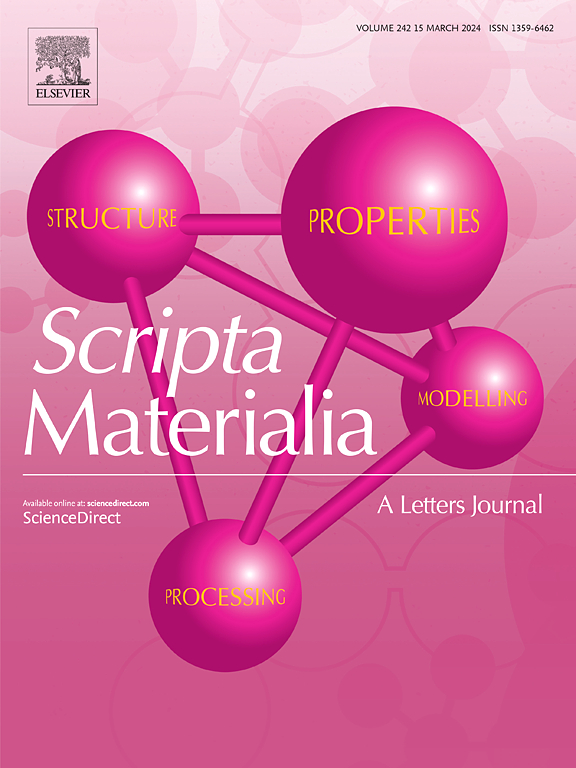铝-铜-锂合金中 T1 沉淀多重增厚机制的新见解
IF 5.6
2区 材料科学
Q2 MATERIALS SCIENCE, MULTIDISCIPLINARY
引用次数: 0
摘要
利用高角度环形暗场扫描透射电子显微镜(HAADF-STEM)、能量色散 X 射线光谱(EDX)和第一原理计算,研究了超时效铝-铜-锂合金中 T1 沉淀的增厚行为。这项研究揭示了铝-铜-锂合金在长期超时效过程中出现的四种不同的 T1 增厚机制。最普遍的机制被称为 I 型,其特点是在两个 T1 单元之间有一个共享的 Al/Li 层。相比之下,II 型和 IV 型涉及两个错位分离的铝/锂层,而 III 型涉及在两个分离的 T1 单元之间插入一个铜层。这四种不同的增厚过程可以共存和相互转换,从而形成不同的 T1 沉淀构型。多种 T1 增厚机制可以调节 T1/Al 基体界面的晶格错位,从而可能影响 T1 相的强化和热稳定性。本文章由计算机程序翻译,如有差异,请以英文原文为准。

New insights into multiple thickening mechanisms of T1 precipitates in Al-Cu-Li alloys
The thickening behavior of T1 precipitates in an over-aged Al-Cu-Li alloy was studied using high angle annular dark-field scanning transmission electron microscopy (HAADF-STEM), energy dispersive X-ray spectroscopy (EDX) and first-principles calculation. This study revealed four distinct T1 thickening mechanisms occur in the Al-Cu-Li alloy during long-term over-aging. The most prevalent mechanism, designated Type-I, is featured by a shared Al/Li layer in-between two T1 units. In contrast, Type-II and Type-IV involve two separated Al/Li layers with different misalignments, while the Type-III involves the insertion of a Cu-layer in-between two separated T1 units. These four different thickening processes can coexist and interconvert, resulting in diverse T1 precipitate configurations. The multiple T1 thickening mechanisms can regulate the lattice misfit of the T1/Al matrix interface, which potentially affect the strengthening and thermal stability of the T1 phase.
求助全文
通过发布文献求助,成功后即可免费获取论文全文。
去求助
来源期刊

Scripta Materialia
工程技术-材料科学:综合
CiteScore
11.40
自引率
5.00%
发文量
581
审稿时长
34 days
期刊介绍:
Scripta Materialia is a LETTERS journal of Acta Materialia, providing a forum for the rapid publication of short communications on the relationship between the structure and the properties of inorganic materials. The emphasis is on originality rather than incremental research. Short reports on the development of materials with novel or substantially improved properties are also welcomed. Emphasis is on either the functional or mechanical behavior of metals, ceramics and semiconductors at all length scales.
 求助内容:
求助内容: 应助结果提醒方式:
应助结果提醒方式:


